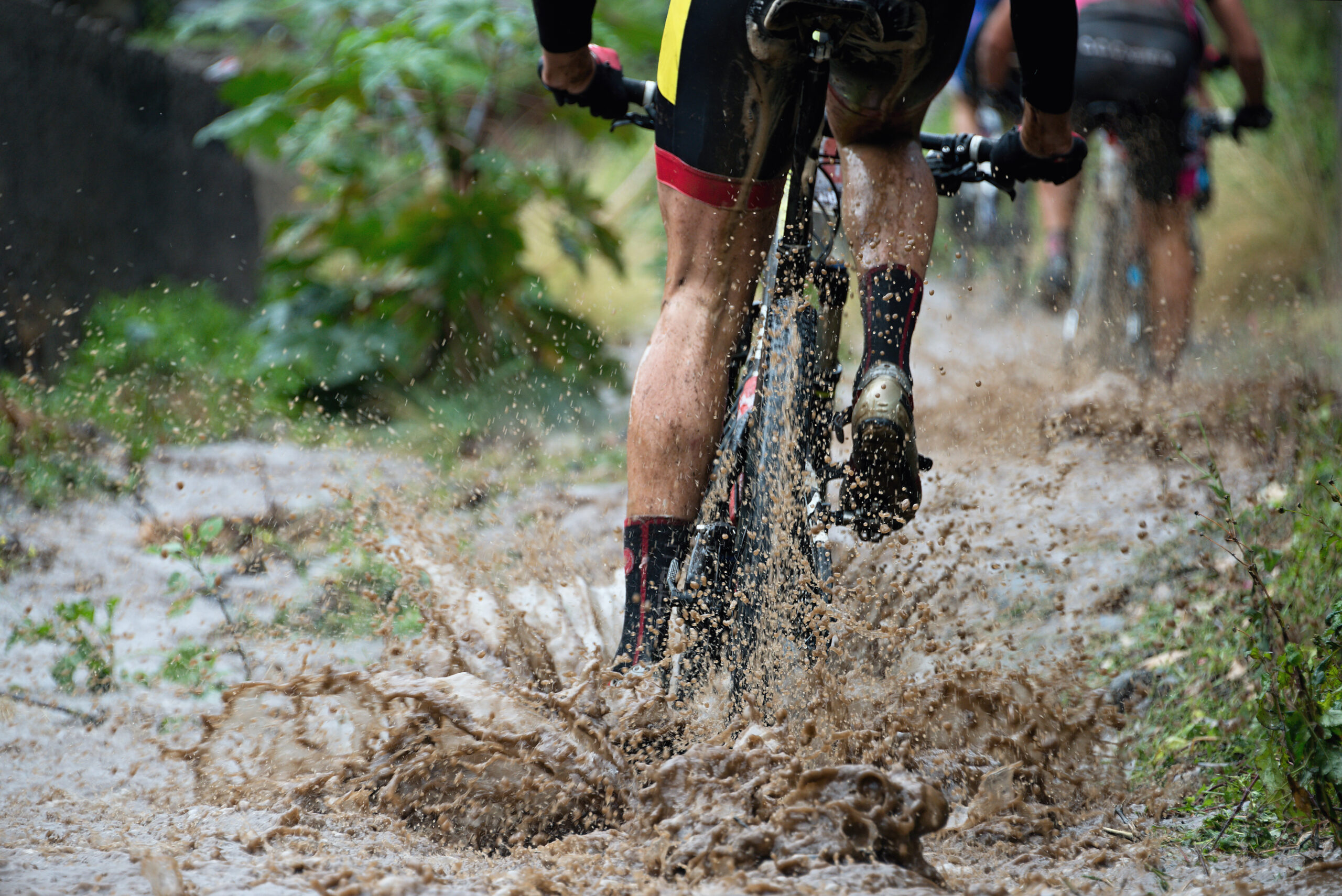You check BBC weather and it warns of rain, but your cycle plans can’t be skipped, don’t panic. Whether you’re deep in a training block or you cycle as part of your commute to work, with the right gear, correct cycling technique and proper bike maintenance, cycling in the rain can be safe and enjoyable. Both this article and bicycle insurance from Cover4Cycles will allow you to keep pedalling, despite the weather.
1. Be Careful of Puddles and Slippery Roads
Wet, slippery roads are unpredictable. Large puddles where you cannot see the road below should be avoided as they often conceal potholes. In extreme situations, the puddle could be hiding where a drain cover or manhole cover has come off. To be safe, cycle around large puddles unless you’re certain of what’s beneath. If you can’t avoid cycling through a puddle, you should do so with care.
You should also avoid metal drain covers and painted road markings, as these too can become very slippery when wet. When coming across things like zebra crossings, directional arrows, road markings and railway crossings as well you should try to slow down. This is especially important if you’re turning a corner.
2. Adjust Your Cycling Technique
In wet conditions, your braking distance doubles, and your cornering grip is also significantly reduced. This means that leaning into corners as you would in dry conditions can be risky. Hard braking as you take the corner on a wet surface can also lead to a loss of traction very quickly,y causing you to slide uncontrollably with little opportunity to stabilise yourself. As a result, make sure most of your braking is done before you take the corner.
If your bike has rim brakes, you should clear excess water as you cycle by tapping your brakes or by gently holding them down and releasing. This will remove excess water from the braking surface. You should also control the amount of braking force you apply to your bike, making sure it’s gradual rather than sudden. By modulating your braking, you prevent lockups. Bicycle brakes can lock up when cycling in the rain as a result of water building up on the braking surface. This reduces the amount of friction between the brake pads and the rim.
In the same vein, make sure you don’t suddenly accelerate as you leave the corner. Instead, wait until you’ve left the corner before you accelerate and do so gently.
When cycling in the rain and on wet roads, you should always reduce your speed, keep your bike upright as much as possible and distribute your weight to the outside pedal to ensure stability. Always steer smoothly, avoid sudden movements and sharp turns and your grip on the roads will be better.
3. Install Mudguards
If you’re about to head out for a bike ride in the rain, you should make sure mudguards are fitted to your bike. They prevent dirty water from splashing up and getting you and your bike dirty. Of course, staying clean is particularly important if you cycle to work; however, keeping your bike clean also goes beyond looks – it means debris doesn’t have the opportunity to build up.
If dirt and grime build up between chain links, chainrings, cogs and other components of your bike, friction can increase. Increased friction makes cycling more difficult; a dirty chain is stiff and less responsive, which makes shifting gears harder. It also impacts the overall efficiency of your drivetrain.
The debris can be wet and this moisture could lead to rust and corrosion, therefore weakening components and making them prone to failure. Avoiding this is easy; install mudguards and make sure they’re full-length.
4. Clean Your Bike
In addition to using mudguards, you should be diligent about cleaning your bike after a rainy bike ride. This prevents the corrosion of your bike parts. The water spraying over your bike is likely dirty, and dirty water can be corrosive to the paintwork and the frame beneath, as well as the drivetrain.
Leaving a wet bike to dry by itself could lead to rust, so make sure to dry it with a cloth. Water can also collect inside the frame, so you could turn it upside down to drain excess moisture.
You should also wipe down your chain and gears and then reapply a bicycle lubricant – wet lubricant is best for damp conditions.
5. Wear the Right Clothing
Wearing the right clothing for wet weather cycling will have an effect on how much you enjoy your ride; luckily cycling rain gear is easy to get right.
Alongside a good waterproof jacket, gloves and overshoes, you should also consider wearing shorts rather than long trousers. Even though it’s wet, you’ll still get warm, and so wearing shorts will mean that although your legs will get wet, they can breathe. Thick trousers will mean you can’t sweat properly, and so you’ll become uncomfortable. Instead, you should embrace getting wet in the rain, and you’ll benefit from regulated sweat.
Additionally, you should wear a cycling cap under your helmet. This allows you to shield your eyes from the rain, which is particularly important if you’re wearing glasses. You could also spray anti-fog spray on them to reduce the number of times you need to dry them.
If you’re worried about wet feet, you could put plastic bags over your feet before you put on your socks. This keeps your rain-soaked socks away from your skin so you won’t feel cold from the rain.
In Summary
Cycling in the rain can be unavoidable but with the right preparation and knowledge it can be safer, easier and more enjoyable. Most importantly, having good bike insurance will mean unexpected incidents, in spite of your preparations, won’t derail any cycling plans.

